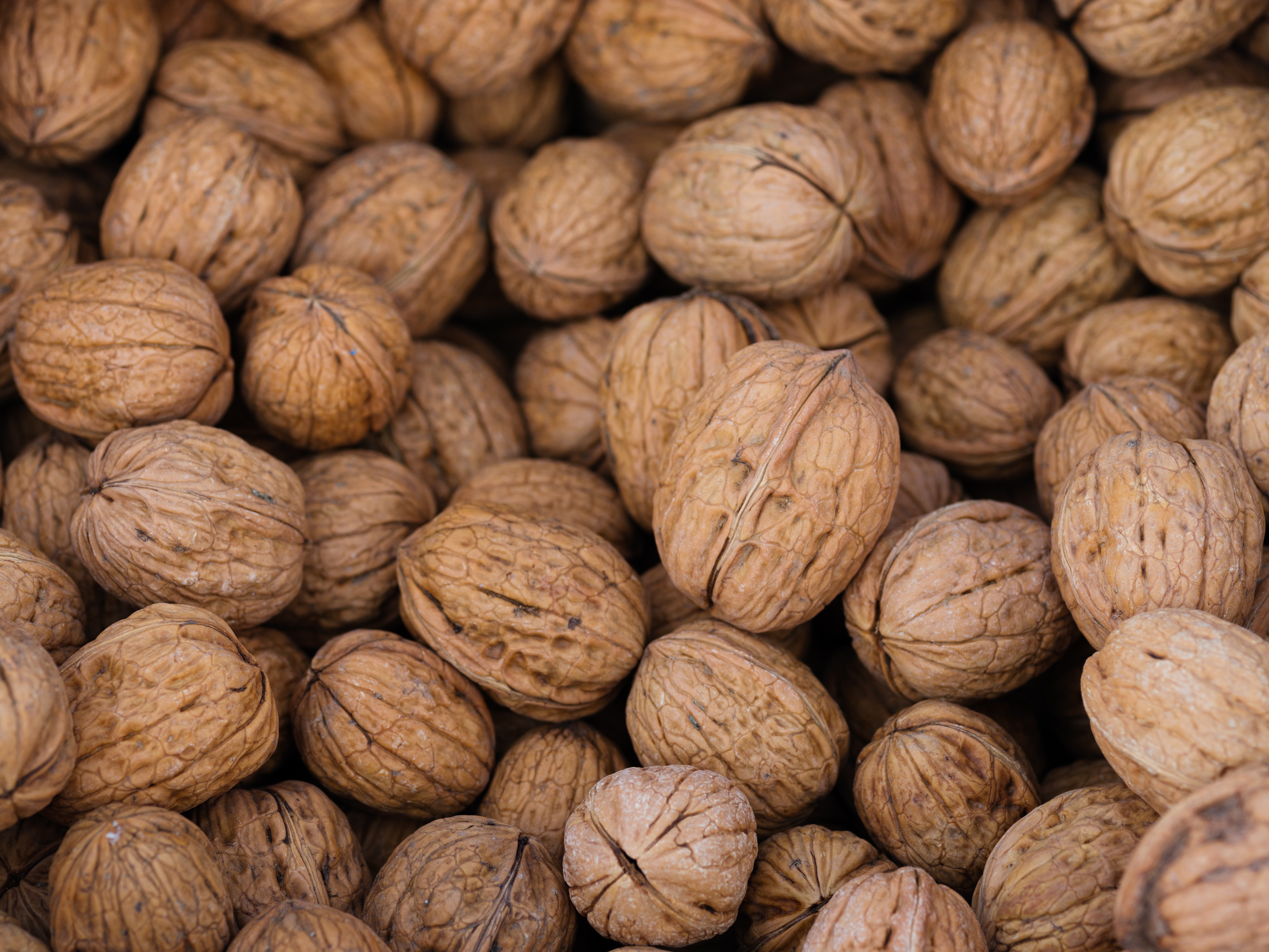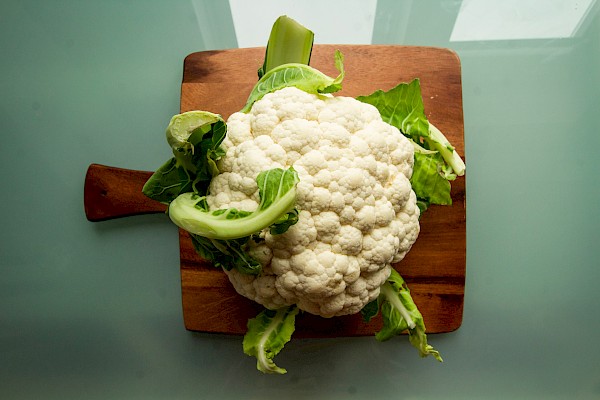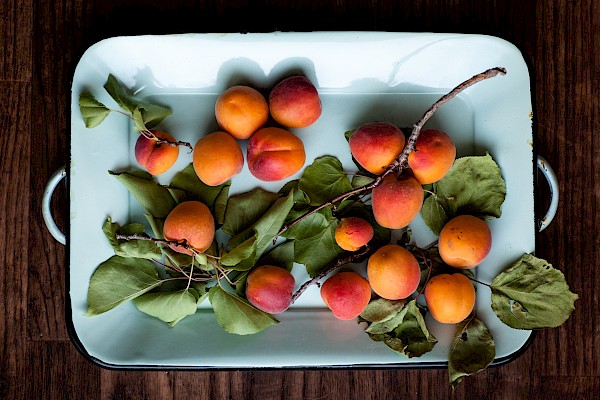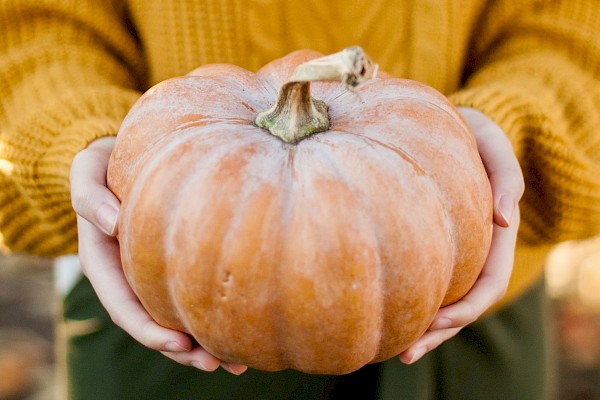The walnut
Brain food or calorie bomb – what do you think?
Like many other nuts, the walnut, often called a Baumnuss in Switzerland, has been shunned for years due to its high calorie content. Yet the hard shell contains a treasure-trove for health. Consuming nuts in moderation will do you and your health a great deal of good. This article will tell you what that means exactly, along with many other interesting things about walnuts.
How the walnut reached us
Historically, walnuts have been known since 7000 BCE. However, they used to be considered a delicacy and were reserved for the rich.
The walnut originated in Persia (Iran), in south-west Asia, which is indicated by one of their common names, Persian Walnut. The walnut’s scientific name is Juglans regia. Juglans comes from the Latin term Jovis glans, which means something like “Jupiter’s acorn” or god-fearing nut. Today it is mainly cultivated in the USA, China, Italy and Turkey.
Here in Switzerland, the walnut tree has had pride of place in every farmyard for centuries. The walnut tree used to be considered a deterrent for flies, mosquitoes and other bugs, which is why farmers planted one near the house and/or the stables, or even by dung-heaps. Approximately 130 walnut varieties grow in this country. They are mostly named after the places in which they were first found.
Good things come to those who wait
Do you dream of walnuts from your own garden? Then you will need a lot of patience. A tree may need up to ten years before it will bear its first fruit. What’s more, the walnut tree needs lots of space. It can grow up to 35 metres tall and live for 150 years.
Healthy omega fatty acids
Walnuts are a source of precious fats, minerals and proteins – nutrients and secondary plant substances that are good for our health. Nevertheless, the fat content – according to figures from the Swiss Food Composition Database – is, at 67.3 g per 100 g, very high, and as a result, walnuts are high in calories. But remember that these fats are very healthy! Walnuts mostly consist of the polyunsaturated fatty acids called Omega-3 and Omega-6. Our bodies cannot produce these, but they are essential.
Although the Omega fatty acids in walnuts are very healthy and can be good for our cardiovascular system, you should not disregard the fact that 100 g walnuts contain a whopping 709 calories (2930 kjoules). That’s more energy, on average, than in a bar of milk chocolate!
Enjoy in moderation is therefore the motto to abide by when you eat walnuts. If you eat a handful of walnuts every day – approximately 20-30 grams – this will be good for your health. This is because eating walnuts, or walnut oil, can help to prevent strokes or heart attacks and also counteracts the development of some types of cancer. What’s more, scientists believe that the polyphenols in walnuts may inhibit the course of degenerative brain diseases such as dementia and Parkinson’s, and even depression, due to their antioxidant properties. However, more research is needed before any real statements can be made about this. Science has yet to conclusively establish what nutrient or combination of nutrients walnuts contain, beside the Omega oils, that is so good for our health. We should also mention that other sorts of nut, in addition to walnuts, are also good for our health.
A high fat content is common to all nuts. However, there are differences. The cashew nut, for example, contains approximately 45.2 g of fat per 100 g, which is quite low compared to the walnut. All nuts are rich in potassium, zinc, magnesium, iron and calcium, and also in B-complex vitamins. They are also a good source of iodine and selenium.
Nuts are your allies in the battle against the bulge
Yes, you read that right! Despite their high calorie content, nuts can be incorporated into a balanced, healthy diet to help control weight. They are also high in fibre, which makes you feel full, meaning that walnuts and nuts in general can help to reduce hunger pangs and so possibly prevent overeating. However, this only works when you eat them in moderation.
Store walnuts correctly and they will keep
The right storage conditions make a big difference to walnuts. It’s best to store them unshelled. This way they will keep for up to two years, provided they were dried first. The nut itself is protected by the shell, which also retains the aroma.
To dry walnuts you have collected on your walks, you should first make sure that they are not mouldy. If nuts lie on the ground for a long time, they absorb moisture, which creates ideal conditions for mould. After checking your foraged walnuts for mould, it’s best to put them on a tea towel and let them dry at room temperature at home. Drying walnuts at too high a temperature (e.g., in the oven) will cause them to go rancid. It’s important to spread your walnuts out so they don’t touch each other, as this allows air to circulate round them on all sides. You should also turn them regularly. Patience is needed for the drying process, as it will be four to six weeks before your walnuts are really dry.
Although unprocessed walnuts make a great snack, we can’t resist giving you another fine recipe tip for the road :-) !
Our recipe tip
Parsley, lemon and walnut pesto
(Ingredients for 4 portions)
- 2 bunches parsley
- 4 tablespoons walnut kernels
- 4 tablespoons lemon juice
- 6 tablespoons extra virgin olive oil
- 2 pinches of salt & pepper
Method: Use a pestle and mortar to pound all the ingredients until you have a smooth paste. If speed is of the essence, you could also chop the ingredients finely in a food processor and then purée them. Finally, season with salt and pepper.
This pesto is delicious with pasta or potatoes. It will also take your salads to a higher level and is suitable for spreading on bread. Enjoy!
(Source)
References
Arab, L. & Ang, A. (2015). A cross-sectional study of the association between walnut consumption and cognitive function among adult US populations represented in NHANES. The Journal of Nutrition, Health & Aging, 19(3), 284-290.
Flores-Mateo, G., Rojas-Rueda D., Basora J. et al. (2013). Nut intake and adiposity: meta-analysis of clinical trials. The American Journal of Clinical Nutrition, 97(6), 1346-1355. Mezzetta, M. (2022). Baumnuss – Harte Schale, gesunder Kern. In Tabula – journal of the Swiss Nutrition Society SGE (4th edition). Schweizerische Gesellschaft für Ernährung SGE. Bern.
Tindall, A., M., Johnston, E. A., Kris-Etherton, P. M. & Petersen, K. S. (2019). The effect of nuts on markers of glycemic control: a systematic review and meta-analysis of randomized controlled trials. American Journal of Clinical Nutrition, 109(2), 297-314.
Vogt, C. (2022). Baumnuss, das Nährstoffwunder hinter dicker Schale. iMpuls. https://impuls.migros.ch/de/ernaehrung/nahrungsmittel/nuesse-schalenfruechte/baumnuesse
 subscribe to newsletter
subscribe to newsletter


